An Experimental Study of Turbulent Structures in a Flat-Crested Weir-Type Fishway
Abstract
:Featured Application
Abstract
1. Introduction
2. Experimental Facility and Methodology
3. Results and Discussions
3.1. Time-Averaged Velocity Distribution
3.1.1. Variation in Longitudinal Time-Averaged Velocity along Flow Direction
3.1.2. Distribution of Longitudinal Time-Averaged Velocity along Depth
3.1.3. Distribution of Vertical Time-Averaged Velocity along Pool Depth
3.2. Vertical Vortex in the Pool
3.3. Turbulence Intensity Distribution
3.4. Reynolds Stress Distribution
4. Conclusions
Author Contributions
Funding
Conflicts of Interest
References
- Nanjing Hydraulic Research Institute. Report of an Overall Model Test for Fishway at Doulonggang Tidal Sluice, Dafeng County in Jiangsu Province; Nanjing Hydraulic Research Institute: Nanjing, China, 1966; p. 28. (In Chinese) [Google Scholar]
- Nanjing Hydraulic Research Institute. Report of Model TestforFishway at Yuxi Sluice of Chao Lake in Anhui Province; Nanjing Hydraulic Research Institute: Nanjing, China, 1968; p. 25. (In Chinese) [Google Scholar]
- Nanjing Hydraulic Research Institute. Report of Model Test for Fishway at Taiping Sluice, Hanjiang County in Jiangsu Province; Nanjing Hydraulic Research Institute: Nanjing, China, 1973; p. 33. (In Chinese) [Google Scholar]
- Nanjing Hydraulic Research Institute. Report of Model Test for Qililong Fishway at Fuchunjiang Hydropower Station; Nanjing Hydraulic Research Institute: Nanjing, China, 1967; p. 30. (In Chinese) [Google Scholar]
- Nanjing Hydraulic Research Institute. Report of Model Test for Yangtang Fishway at Hengdong Pumped Storage Power Station; Nanjing Hydraulic Research Institute: Nanjing, China, 1978; p. 38. (In Chinese) [Google Scholar]
- Clay, C.H. Design of Fishways and Other Fish Facilities, 2nd ed.; Dept. of Fish. Can.: Ottawa, ON, Canada, 1995; p. 256. [Google Scholar]
- Bates, K. Draft Fishway Guidelines for Washington State; Washington Department of Fish and Wildlife: Washington, DC, USA, 2000; p. 57. [Google Scholar]
- UNESCO. UN World Water Development Report-Water for People and Water for Life; UNESCO: Paris, France, 2003; Part 3, Chapter 6. [Google Scholar]
- Parrish, D.L.; Behnke, R.J.; Gephard, S.R.; McCormick, S.D.; Reeves, G.H. Why aren’t there more Atlantic salmon? Can. Fish. Aquat. Sci. 1998, 55 (Suppl. 1), 281–287. [Google Scholar] [CrossRef]
- Clay, C.H. Design of Fishways and Other Fish Facilities; Dept. of Fish. Can.: Ottawa, ON, Canada, 1961; p. 301. [Google Scholar]
- Rajaratnam, N.; Subramanya, K. Diffusion of rectangular wall jets in wider channel. J. Hydraul. Res. 1967, 5, 281–294. [Google Scholar] [CrossRef]
- Rajaratnam, N.; Van der Vinne, G.; Katopodis, C. Hydraulics of vertical slot fishways. J. Hydraul. Eng. 1986, 112, 909–927. [Google Scholar] [CrossRef]
- Rajaratnam, N.; Katopodis, C. Hydraulics of Denil fishways. J. Hydraul. Eng. 1984, 110, 1219–1233. [Google Scholar] [CrossRef]
- Teppel, A.; Tyminski, T. Hydraulic research for successful fish migration improvement–“nature-like” fishways. Civ. Environ. Eng. Rep. 2013, 10, 125–137. [Google Scholar]
- Tymiński, T.; Kałuża, T. Effect of vegetation on flow conditions in the “Nature-Like” fishways. Rocz. Ochr. Śr. 2013, 15, 348–360. [Google Scholar]
- Hämmerling, M.; Kałuża, T.; Walczak, N. Hydraulic conditions of water flow in seminatural fish pass, A case study of the Skórka barrage on the Głomia river. Acta Sci. Pol. Form. Circumiectus 2017, 16, 85. [Google Scholar] [CrossRef]
- Hämmerling, M.; Kałuża, T. Analysis of Fish Migration Potential Through the Seminatural Fish Pass on an Example the Skórka Barrage on the Głomia River. Rocz. Ochr. Śr. 2018, 20, 574–587. [Google Scholar]
- Northcutt, R.G. Evolution of gnathostome lateral line ontogenies. Brain Behav. Evol. 1997, 50, 25–37. [Google Scholar] [CrossRef] [PubMed]
- Liao, J.C.; Beal, D.N.; Lauder, G.V.; Triantafyllou, M.S. Fish exploiting vortices decrease muscle activity. Science 2003, 32, 1566–1569. [Google Scholar] [CrossRef] [PubMed]
- Hinch, S.G.; Rand, P.S. Swim speeds and energy use of upriver-migrating sockeye salmon, role of local environment and fish characteristics. Can. Fish. Aquat. Sci. 1998, 55, 1821–1831. [Google Scholar] [CrossRef]
- Standen, E.M.; Hinch, S.G.; Healey, M.C.; Farrell, A.P. Energetic costs of migration through the Fraser River Canyon, British Columbia, in adult pink and sockeye salmon as assessed by EMG telemetry. Can. Fish. Aquat. Sci. 2002, 59, 1809–1818. [Google Scholar] [CrossRef]
- Herskin, J.; Steffensen, J.F. Energy savings in sea bass swimming in a school-measurements of tail beat frequency and oxygen consumption at different swimming speed. J. Fish Biol. 1998, 53, 366–376. [Google Scholar] [CrossRef]
- Pisaturo, G.R.; Righetti, M.; Dumbser, M.; Noack, M.; Schneider, M.; Cavedon, V. The role of 3D-hydraulics in habitat modelling of hydropeaking events. Sci. Total Environ. 2017, 575, 219–230. [Google Scholar] [CrossRef] [PubMed]
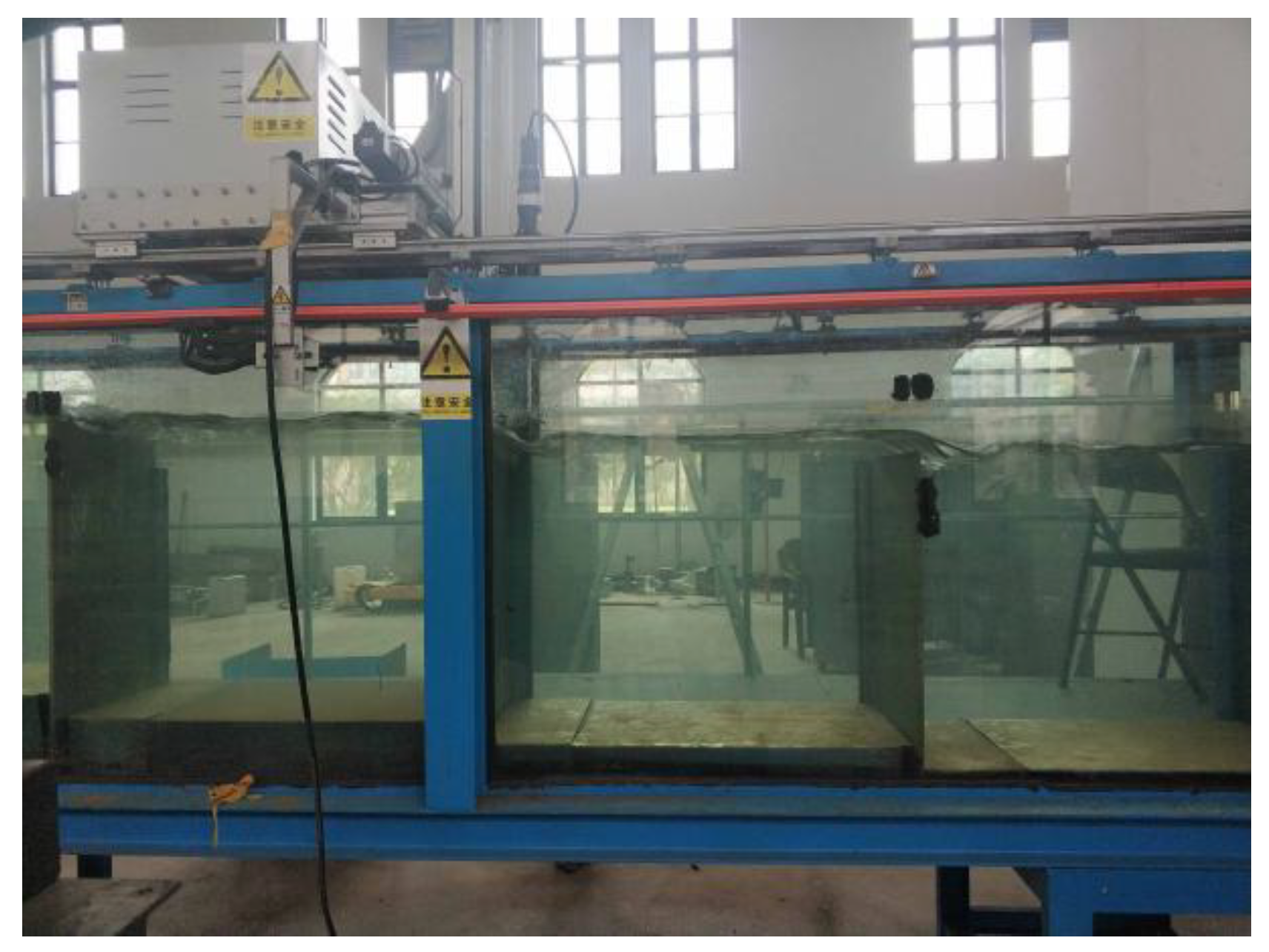

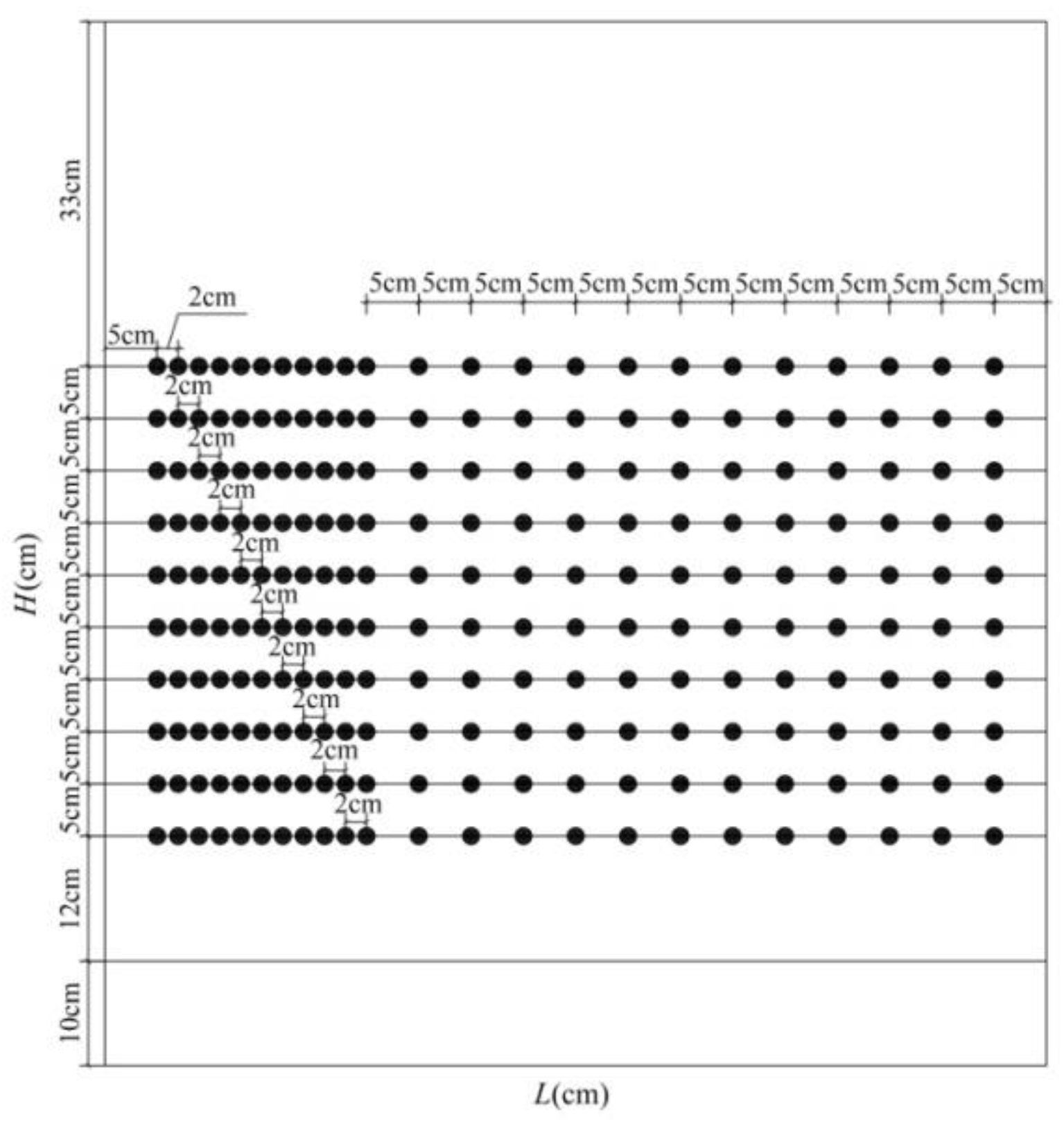

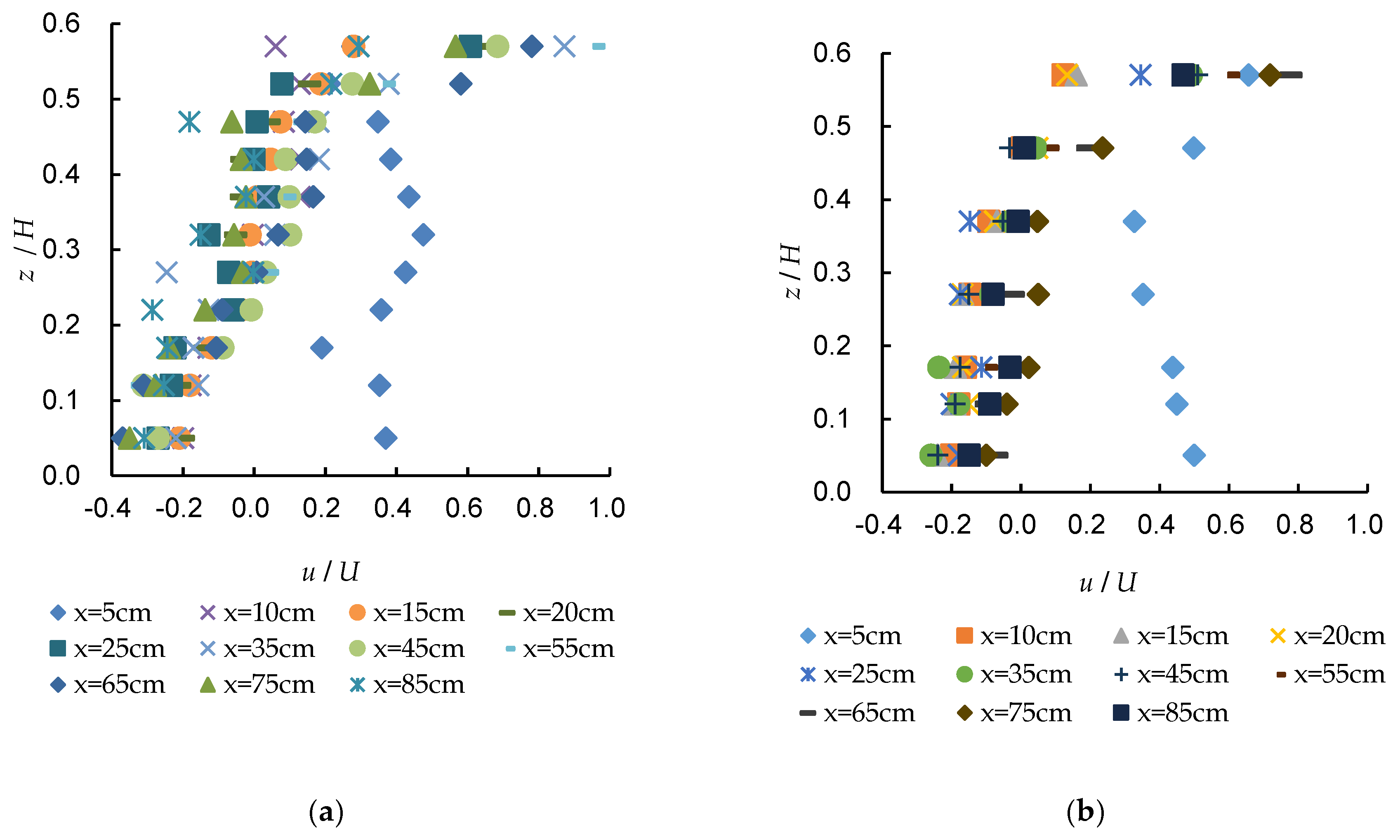
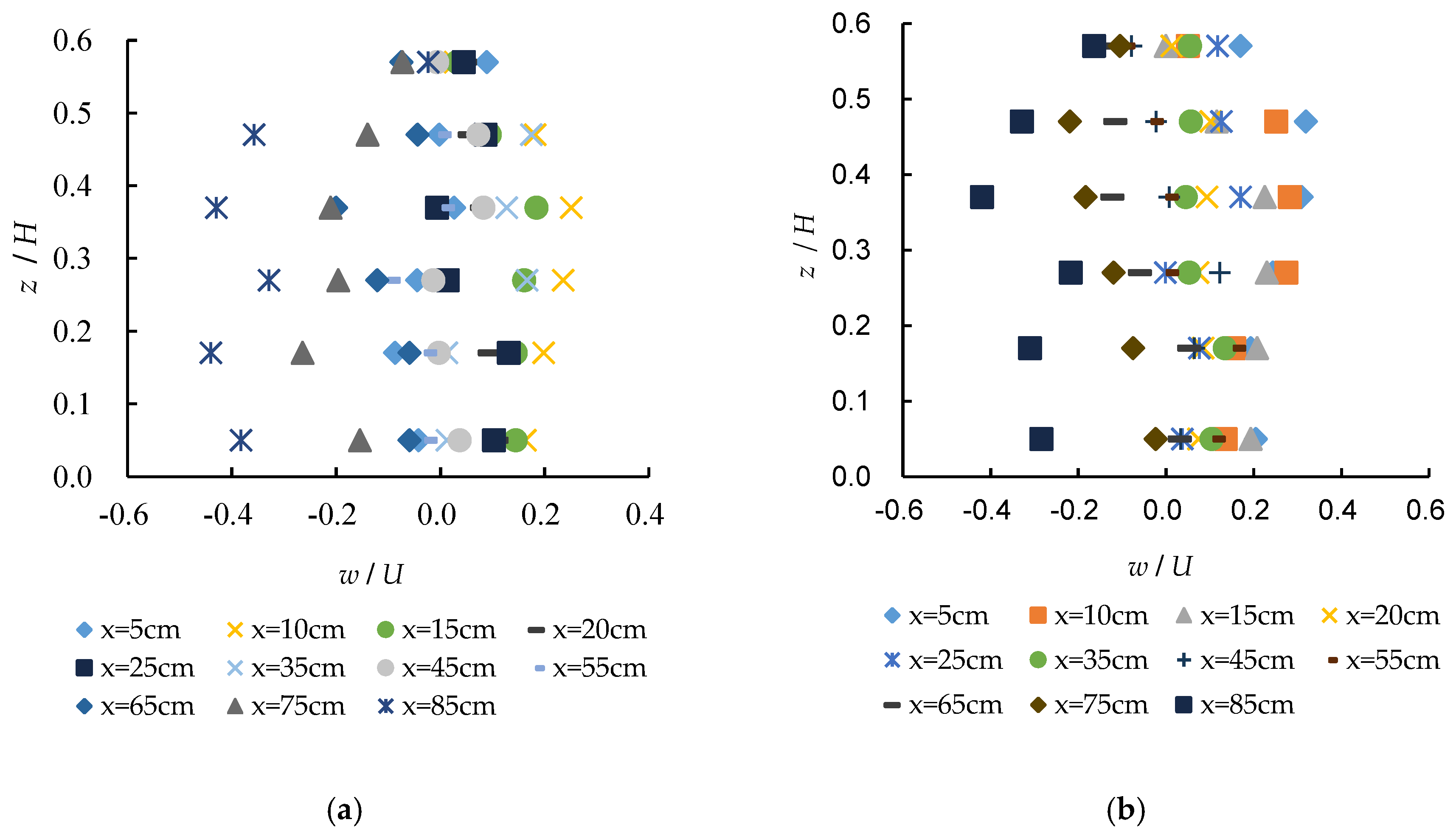
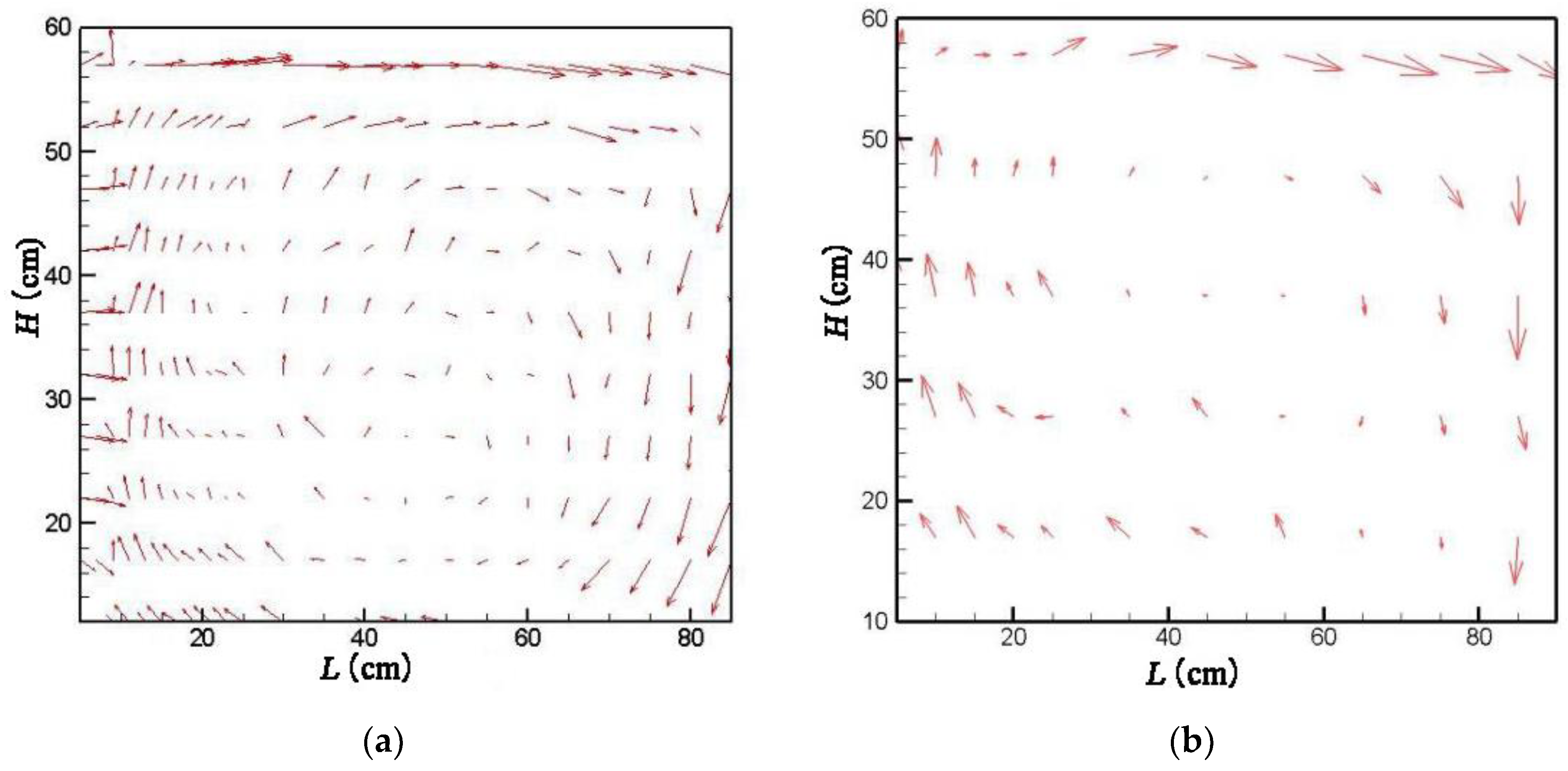

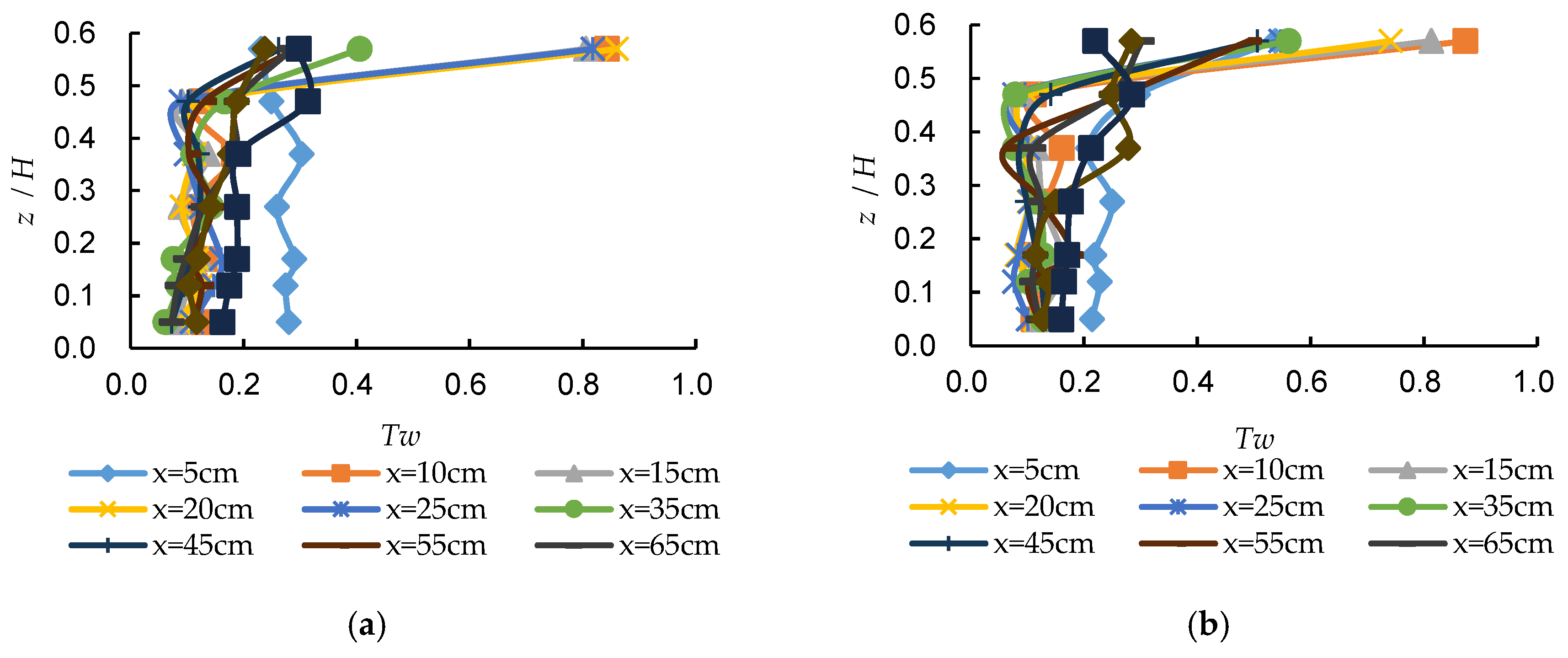


© 2019 by the authors. Licensee MDPI, Basel, Switzerland. This article is an open access article distributed under the terms and conditions of the Creative Commons Attribution (CC BY) license (http://creativecommons.org/licenses/by/4.0/).
Share and Cite
Guo, Z.; Sun, X.; Dong, Z. An Experimental Study of Turbulent Structures in a Flat-Crested Weir-Type Fishway. Appl. Sci. 2019, 9, 4040. https://doi.org/10.3390/app9194040
Guo Z, Sun X, Dong Z. An Experimental Study of Turbulent Structures in a Flat-Crested Weir-Type Fishway. Applied Sciences. 2019; 9(19):4040. https://doi.org/10.3390/app9194040
Chicago/Turabian StyleGuo, Zhiping, Xihuan Sun, and Zhiyong Dong. 2019. "An Experimental Study of Turbulent Structures in a Flat-Crested Weir-Type Fishway" Applied Sciences 9, no. 19: 4040. https://doi.org/10.3390/app9194040
APA StyleGuo, Z., Sun, X., & Dong, Z. (2019). An Experimental Study of Turbulent Structures in a Flat-Crested Weir-Type Fishway. Applied Sciences, 9(19), 4040. https://doi.org/10.3390/app9194040




